Traveling Kenya – Samburu Safari (Photos)

At 165 km², Samburu is smaller than the other parks — less than half the size of Amboseli — but has the benefit of being right across the Ewaso Ng-iro River from Buffalo Springs National Reserve. The river is a lifeline for the otherwise very dry land here. Technically, we should have had to pay admission fees to Buffalo Springs but we came and went freely throughout our time there.
We stayed at Larsens Tented Camp, going a bit more luxurious than the other safaris. (Read/see more about our Kenya safari accommodations.)
Every park has its own character so no, we weren’t tired of the safari life after seeing Maasai Mara, Lake Nakuru and Amboseli. Each place had new animals to share. Samburu offered a different species of giraffe and zebra as well.
This was the first place we saw the chihuahua of the antelope world, the dik-dik. Or what the leopards and cheetahs would likely would refer to as popcorn.
The variations among similar animals are striking. The giraffe has obviously evolved to get at those upper leaves in the trees, but it is not alone. This is a gerenuk. With that long neck, they are able to…
Er, well, that’s not what I was thinking.
Yes, this is more the idea.
There are three species of hornbills in Samburu. This is the yellow-billed hornbill. (See more of the hornbills and birds in an upcoming post.)
The vervet monkeys hung around the camp most of the day. We had to zip the tent shut and fasten it with a hook we could barely open it ourselves. At one point I stepped inside to grab something and a second later, someone was holding open the flap with one hand and having a look around at what he might grab. I’d have coffee brought to my tent each morning before sunrise and sit on the deck to watch it gradually light up the river. The cookies on the tray got a lot of attention from the local monkeys, so much so one day that I just decided to gather it all up and move back inside the tent. Cheeky monkeys, literally. Someone on staff carries a slingshot which he just snaps once and the monkeys scatter. I advised they provide guests with supersoakers. Fun for all. A group of unwary guests had all their bread stolen and drinks tipped into their laps by a bold attacker that leapt into the middle of their dinner table. The one photograhed here appears a bit more pensive. Yeah, right.
Peung loves her iPhone. Here she shows off her talents shooting photos and video at the same time. The hornbills around the camp do allow one to get so close. Peung mocks me for my weak spot for them. I just wanted to take one home. The hornbill, on the other hand, just wanted by bread roll.
Animal Behavior
Seeing the animals is one thing, witnessing interesting behavior is another. Here a couple of impalas compete for territory or a mate perhaps.
The giraffe species at Samburu is the reticulated giraffe. Here a couple are fighting. Even they soon got bored when all they could do is sort of flop their necks at each other. Funny stuff. The animal kingdom equivalent of inflatable sumo-wrestler costume challenges.
Baboons
The baby baboons are cute; where they are sitting sometimes isn’t so much.
The baboons are fascinating. Here they move in a troop, in case you were wondering what a group is called. You can also say a “congress” of baboons, easily confused with American lawmakers. These animals may seem rather benign, but in cases of defense, they have been known to attack leopards using their powerful jaws. Baboons, I mean, not Congress members. (Here’s an amazing story of such a baboon vs. leopard story.)
Far off in the distance I noticed this baboon climbing a dead tree for a moment after the troop had passed, and just having a look at the world around it.
Elephants
The elephants take on a different color in Samburu due to the color of the mud and dust they cover themselves with for sun protection. As opposed to a gray color in Amboseli, these appear reddish.
Knowing the elephants cross the river often I realized that our tented camp could potentially host some big visitors as the riverside property only had a fence on the land side.
Cheetahs and Leopards
Right outside the camp gate, about a quarter mile down the dusty road, our first animal sighting of our first game drive (guided this time) was this leopard.
We wondered all week if we’d get to see a cheetah. The morning of our departure, as we packed and drove out toward the highway, we saw two safari vans together — a sure sign of something to see. Sure enough: not one, but two female cheetahs. We spent an hour watching them as they made some unsuccessful chases of local dik-diks into the scrubby brush. Much of the time they just sat in the shade and kept an eye out. We got within twenty feet of them, but they rarely ever looked at us, as if we were just another piece of the landscape.
Look at those muscles! Now that cat is cut! It’s no wonder they can reach speeds of over 70 m.p.h.!
See some of my other photos and blogs from safari.
Go to the main site of The Mad Traveler for an Amboseli photo gallery and more!



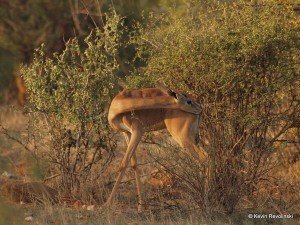





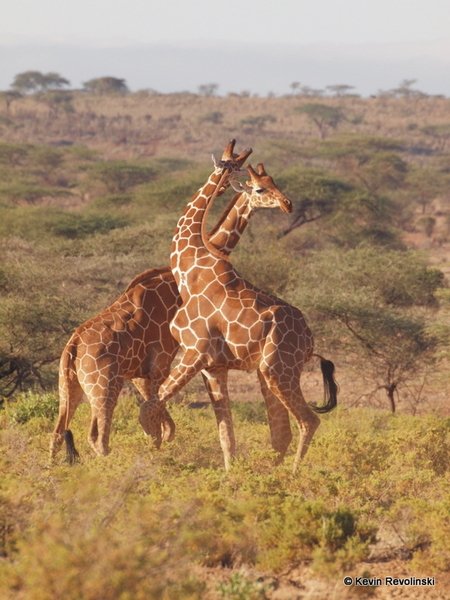
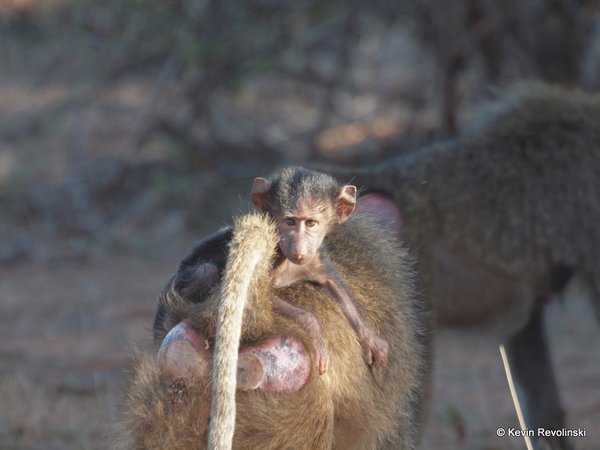



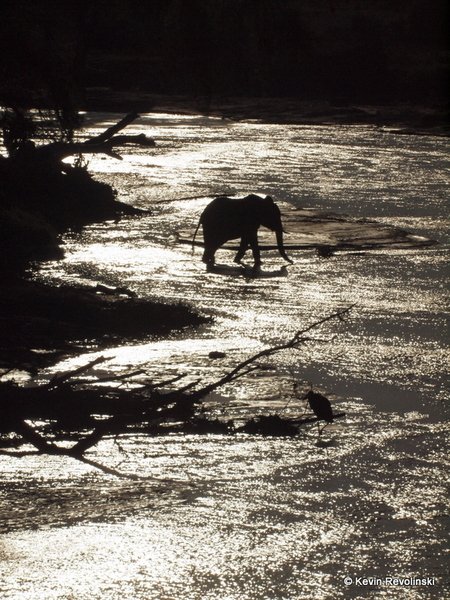

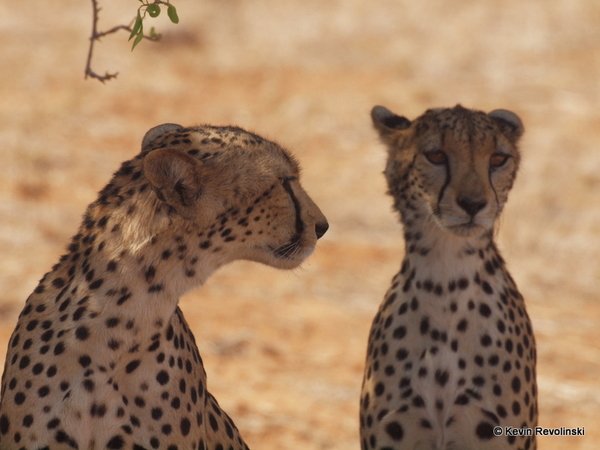

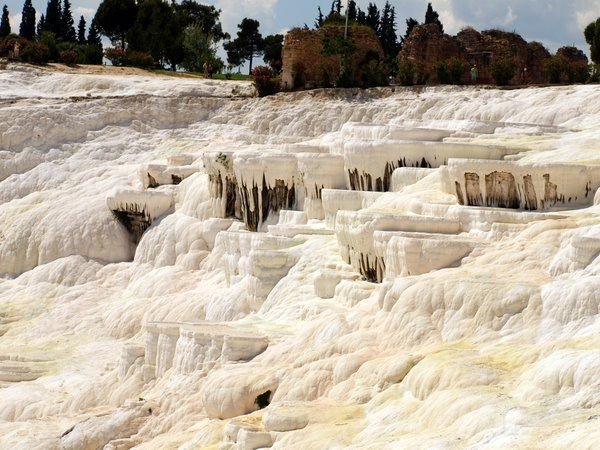


 ORDER YOUR COPY TODAY!
ORDER YOUR COPY TODAY! ORDER YOUR COPY TODAY!
ORDER YOUR COPY TODAY!
Keep the great posts and photos coming from Africa.
Thanks, Ted. Hornbills are up next!
Wow, killer shots Kevin. Can’t believe you saw that leopard right outside your camp on your first drive. You won’t believe that after 8 years in Kenya and many safaris I’ve still never seen a leopard in the wild. Sitting in an open tree like that is a true rare beauty!
Even our guide was chuckling at our luck. If you haven’t already, you can see one of leopards we saw in Maasai Mara with a kill up in the tree. Then it jumped down and strolled over to the river to have a drink. This was a very lucky trip and just at the end on the way out we saw those cheetahs. The only thing we feel we missed in all the safaris was the black rhino. (We did see the white at Lake Nakuru!)
Pingback: Hornbills of Kenya (Photos)
Amazing shots! You captured the colors on the giraffe impeccably.
Thanks, Sarah!
These photos of Kenya wildlife are outstanding. Especially the elephant crossing the river, with the silver reflection…oh I love that one!
Thanks, Jane! Kenya is a beautiful place. Makes it easier to get a few nice shots. 🙂